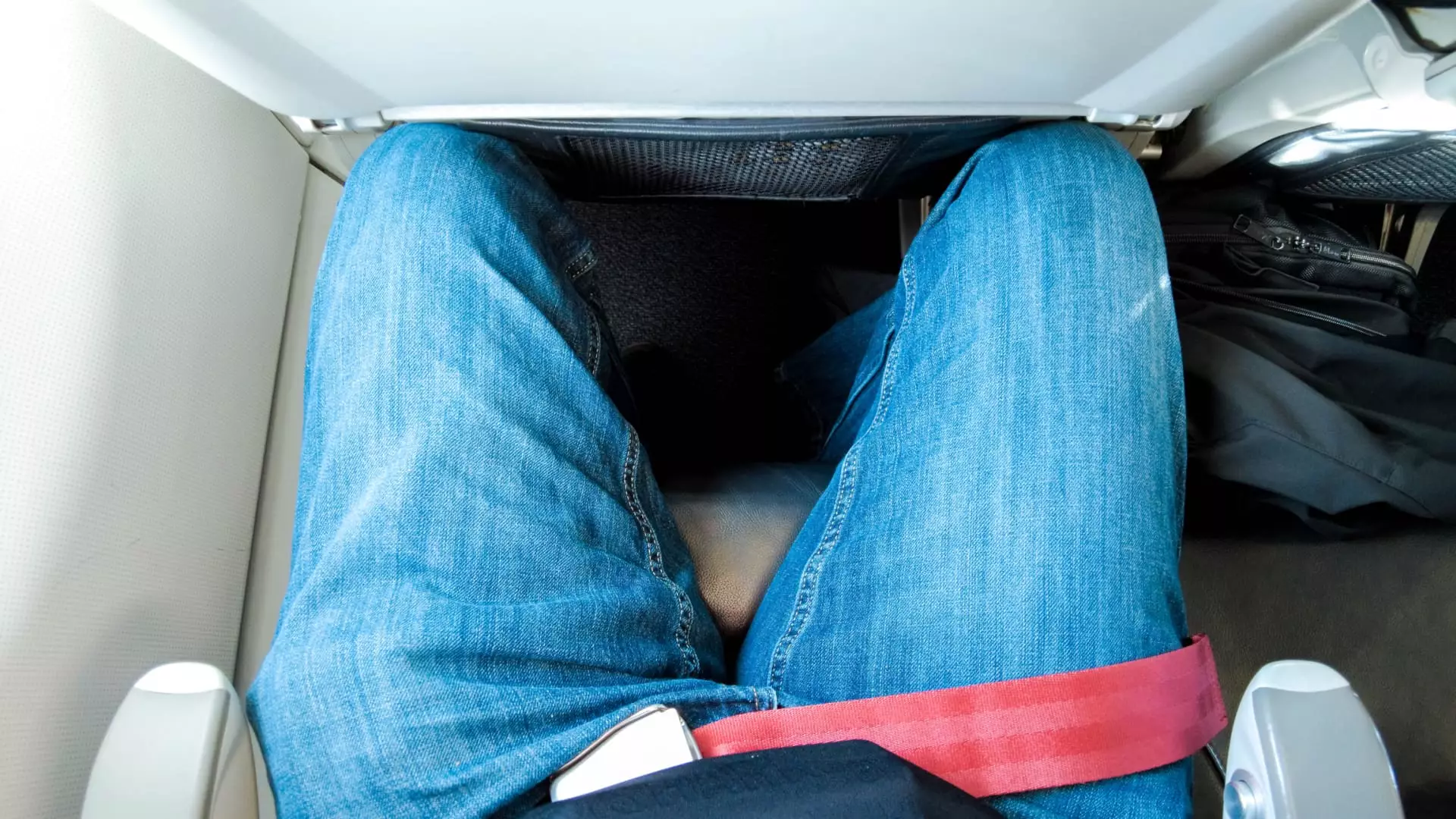In the increasingly cramped quarters of modern air travel, tensions can flare over seemingly trivial matters, as demonstrated by a recent incident involving a disgruntled couple and a fellow passenger aboard a Cathay Pacific flight from Hong Kong to London. The long-haul journey quickly devolved into chaos after one passenger reclined her seat—an action that has ignited a fierce debate over the appropriate behavior in confined airplane spaces. The fallout from this altercation not only led to a public relations crisis for the airline but also highlighted the cultural and personal dynamics influencing in-flight interactions.
The culprits in this particular story were reportedly a couple who engaged in vulgar gestures and pushed the reclined passenger’s seat in retaliation for her decision to lean back. This confrontation, which was captured on video and subsequently shared on social media, reveals the complexities of social interactions in a tight environment. At its core, this incident underscores how the act of reclining one’s seat has transformed into a hot-button issue in the realm of air travel etiquette.
Reclining seats were once seen as a minor luxury afforded to economy class passengers, but as airlines have reduced seat pitch—the distance between rows of seats—to maximize the number of tickets sold, this behavior is increasingly viewed as provocative. While some argue for their right to recline, others feel that such an action encroaches on their personal space, especially during hours-long flights. The Cathay Pacific situation showcases how personal boundaries and cultural perceptions can intersect, leading to unexpected confrontations.
Cathay Pacific’s official response to this incident was to enforce a zero-tolerance policy for behavior deemed disruptive or unsatisfactory. The airline stated that the couple involved was permanently banned from traveling with them following the altercation. Yet, reactions to this punitive measure were mixed, especially among social media users from mainland China who suggested that the airline’s initial response revealed deeper issues regarding customer treatment and airline policies.
Many commenters felt that the airline’s actions were reactive rather than proactive, indicating a failure to effectively manage cabin behavior in the first instance. This sentiment echoes findings from previous incidents involving Cathay Pacific, which has faced scrutiny for how it manages interactions between staff and diverse groups of passengers. A rapidly evolving cultural landscape—particularly between mainland Chinese travelers and Hong Kong locals—could also play a significant role in how such disputes are perceived.
The incident’s backdrop is heavily steeped in the ongoing socio-political tensions that characterize the relationship between mainland China and Hong Kong. Passengers involved referred to the reclining woman as a “mainlander,” a term often loaded with cultural implications and animosities stemming from differing dialects, ideologies, and lifestyles. The historical context of Hong Kong’s return to Chinese sovereignty has resulted in a cultural chasm that influences day-to-day interactions, mundane or otherwise.
In this light, the uncomfortable airplane dispute serves as a microcosm of larger societal issues. The fallout emphasizes that these distressed personal interactions aboard commercial flights are often reflective of broader cultural divisions. Layering these tensions onto an already stressful travel experience only serves to magnify disputes over personal rights and the sense of entitlement experienced or perceived by passengers.
Airline Etiquette: What Should the Norm Be?
Debates about in-flight etiquette, particularly regarding reclining seats, reveal an ongoing struggle among passengers to establish norms that accommodate the varying preferences of modern travelers. Some argue vigorously for the right to utilize the recline feature of their seats, while others insist it is an unwelcome intrusion on personal space.
To find middle ground, the conversation might benefit from established guidelines—such as: communicating intentions, considering the time of day, or prior agreement from the passenger behind before reclining. However, the efficacy of any etiquette standard remains questionable in a packed airplane atmosphere where personal boundaries are constantly encroached upon.
The recent Cathay Pacific incident serves as a stark reminder of the importance of comprehensive and respectful communication during air travel. As flying experiences evolve, airlines will need to consider the social dynamics that underpin these interactions while also enforcing their policies to ensure a safe and comfortable environment for all passengers. In this rapidly changing landscape, fostering awareness of personal rights, social norms, and cultural sensibilities could pave the way for smoother journeys and enhance the overall travel experience. As the airline industry grapples with these complexities, the lessons learned from such disputes will remain critical to shaping the future of air travel.


Leave a Reply